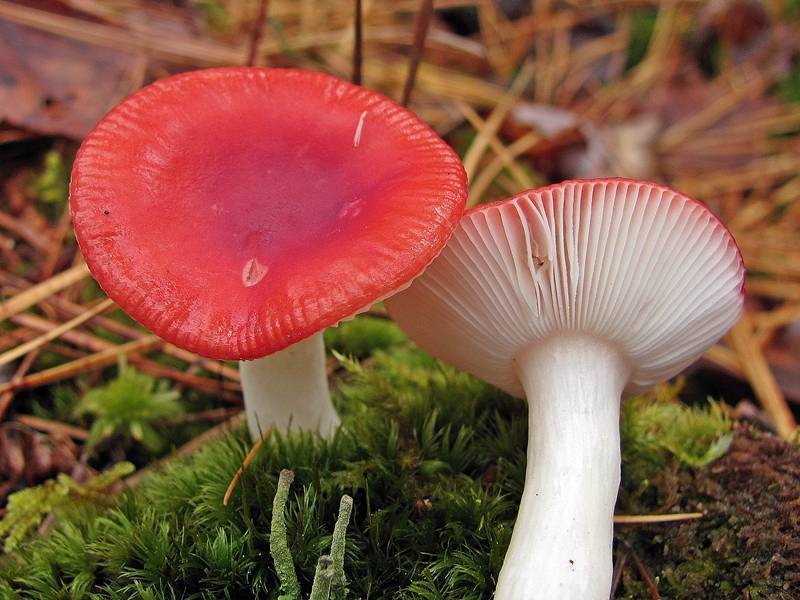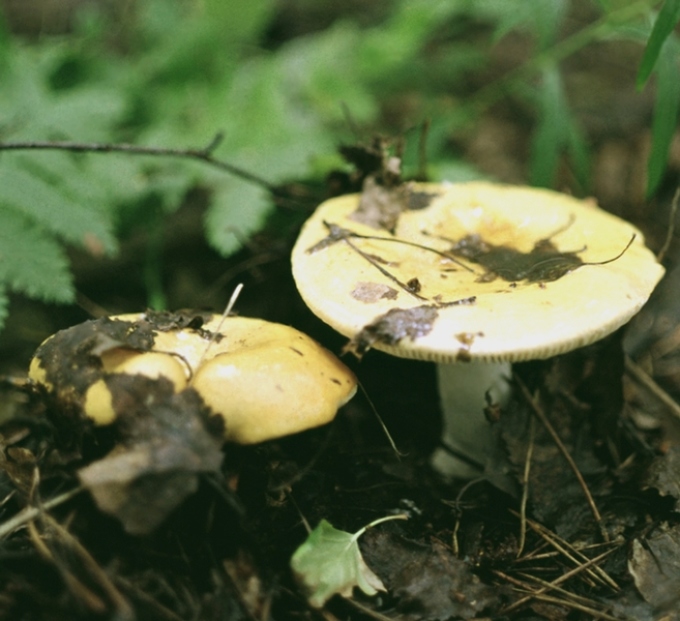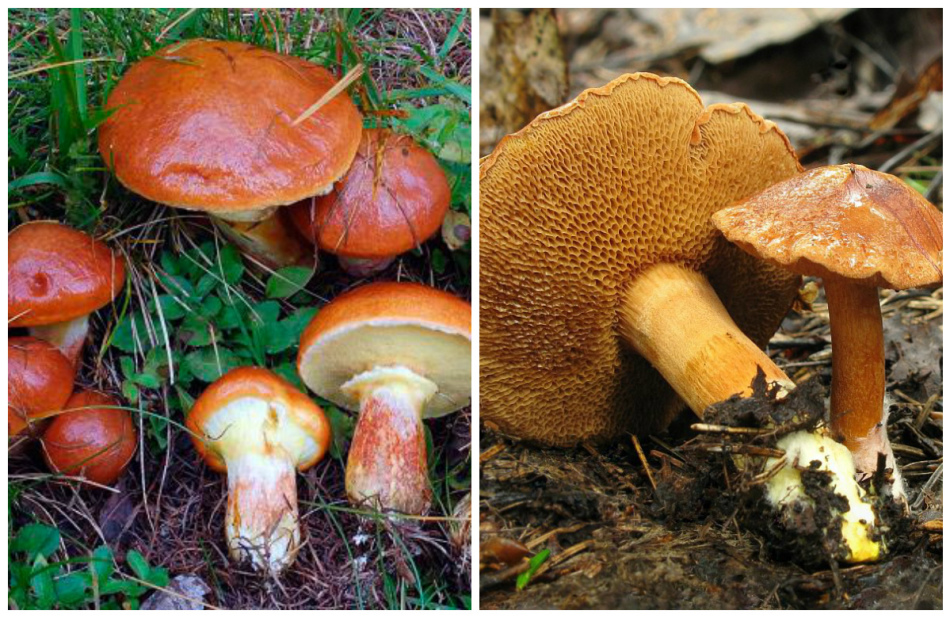In this article, we will consider the difference and variety of rawers. We will also tell you how to distinguish the false from the edible raw, and how to properly prepare the mushroom for cooking.
Content
- Raw mushrooms - edible and inedible: varieties when appear, description, photo
- Raw mushrooms are edible: benefits and harm, what can you confuse with?
- How to distinguish mushrooms of raw -shaped mushrooms from the present: comparisons, similarities and differences
- How to clean and treat the mushrooms of rahs?
- Can there be poisoning mushrooms?
- Video: how to distinguish edible mushrooms: we find the difference between rawers from poisonous gutters and fly agaric
Surely many have heard about such mushrooms as rawers, but few people know that there are a huge number of their species, among which you can also find toxic mushrooms. Knowing the varieties of rawers and their description, you can easily distinguish an edible mushroom from the poisonous, thereby preserving your health and health of your relatives.
Raw mushrooms - edible and inedible: varieties when appear, description, photo
Not every person, having learned that the raws are blue, green, greenish will believe in this information. At the same time, these delicious mushrooms are really completely different, and each such species has its own characteristic features.
- Differences are white. This type of mushrooms is easy to identify by the white color of his hat and legs. Much less often of loads has a white hat with yellowish dots. These mushrooms can be found in the forest from mid -summer to mid -autumn, depending on what the weather was. Mushrooms are attributed to edible.

- Yellow raw. The hat of this mushroom has a light yellow color, the leg is white. A distinctive feature of the yellow raw dump is that its skin, which is located on the very edge of the hat, is very easily ripped off. In the center of the hat, you can often see a small recess. These mushrooms are counted for edible, collect them from July to October.

- Green raw. This mushroom can easily be mistaken for toxic, since its appearance is completely unattractive. The color of the hat is pale green with a yellowish tint. Despite its appearance, the mushroom is edible and very tasty.

- Blue raw. This forest beauty has a blue-violet hat, and blue can be very dark. The leg of such a cheese is white. The mushroom can be consumed in food.

- Drill raw. These mushrooms look very attractive. The cheese hat has a brown-red color with gray interspersed. The leg of the rahs is white. You can collect such mushrooms from mid -summer until the beginning of autumn.

- Swamp raw. Despite its name, the mushroom is quite beautiful. The hat is painted bright red with a brown tint to the center. Young mushrooms have convex hats, old ones, on the contrary, they have a recess in the center. The leg of such a cheese has a white color with a pinkish tint. You can collect a marsh cheese from June to September.

- Greenish raw. A fairly large mushroom with a hat painted in a dirty green color with gray and blue shades. Old greenish rahs are distinguished by a convex hat. These mushrooms can be found to the forest throughout the summer.

- Green red raw. This mushroom is also large enough and has a bright color hat - red, yellow. The leg, like that of a greenish rah, white with a pinkish tint. You can meet these mushrooms in July-September.

- Blue-yellow raw. The hat of this mushroom has a blue-violet color with yellow sprates. The leg differs in that it is wide enough. Mushrooms are considered edible, but they do not have great food value.

As for inedible rawers, it is important to say the following. Not all inedible rawers are attributed to toxic mushrooms, many of these mushrooms simply have an unpleasant bitter and even burning taste, because of which they actually are not eaten. Others can cause weak disorders, small disorders in the work of the gastrointestinal tract.
It is much more important to be able to distinguish rawers from other really poisonous mushrooms that lead to death, but more on that later.
- Birch raw. Most often, this mushroom has a pink-purple hat with a yellow tint, but other colors, for example, copper, red, etc. can also occur. Young birch russulas have a small feature-their hats at the edges are wavy. The leg is most often white with a yellow tint. The mushroom itself is very fragile. They can be found in the forest from mid -summer until the beginning of autumn. Many mushroom pickers believe that this type of raw is still edible, since all toxins are in the upper film of the mushroom, which is easily cleansed.

- Red raw. This mushroom is much smaller than its brothers in size, has a dark red color and a pink or white-pink leg. The mushroom has a characteristic delicious smell, but a very caustic and burning taste. It grows in August, September.

- Pink raw. The mushroom is painted in a delicate pink color, in the forests appears in the late summer and grows around the end of September. This mushroom tastes very bitter.

- Cele raw. The appearance of the mushroom is very attractive, the hat has a beautiful dark-beard, dark purple. The leg, as a rule, has the same colors. The mushroom tastes spicy and burning, but its smell is mushroom. The celler is not very large.

- Broken raw. Most often, mushrooms of this species grow in large groups. The hat along the edges has a delicate pink color, and in the center a more saturated pink with a purple tint. In size, this mushroom is also small and unpleasant in taste.

- Maire's raw. It is better to bypass this mushroom, since it will easily provoke poisoning and violations by the gastrointestinal tract. The color of the hat is very bright and saturated red. The leg is most often white, but at the base it can be yellowish and brownish.

- Burning cheese. The shape of the hat is most often outstretched, the color is red or pink red. A distinctive feature is a sharp unpleasant odor and the same taste of the mushroom.

Raw mushrooms are edible: benefits and harm, what can you confuse with?
Before talking about the benefits and dangers of these mushrooms, I must say that there are 2 types of rawers that can easily be confused with a really dangerous fungus - a pale bastard.
- So, the green and greenish raw din can be confused with inexperience with a pale bog, the use of which can end in the death of a person.
- Remember that there are no films, wrappers, etc. on the leg of the rawh. The pale pale to the bottom of the legs has a kind of wrapper.
- Above the legs of the hollow, you can also most often see a “skirt” from the film, the back of the leg is “clean”, without film, etc.
- The back of the leg has a straight and even, without thickening, the poisonous mushroom of the leg to the top is thinner.
- Also pay attention to whether worms, bugs, etc. “love” the mushroom. As you know, none of the representatives of the animal world will eat a poisonous mushroom. Therefore, if the mushroom is not touched, very beautiful, think about whether it is edible.

Relatively the benefits of rawers I must say the following:
- These mushrooms, like many others, are a source of vitamins and trace elements. For example, in the composition of rawers in sufficient quantities there are vitamins of group V.
- Also in these fungi there are fatty acids.
- Moreover, it is precisely the composition of the rawings that has a enzyme called Russulin, which promotes milk coagulation. This substance is extremely necessary in cheese.
As for the possible harm From these mushrooms, we can say the following:
- The biggest harm can be brought not to rawers, but by toxic mushrooms with which they are easy to confuse. In this case, even lethal consequences are possible.
- Also, some types of rawers can provoke mild poisoning and, accordingly, vomiting, nausea, etc.
- In large numbers, these mushrooms give a fairly serious load on the stomach and heart, so you need to eat them a little.
How to distinguish mushrooms of raw -shaped mushrooms from the present: comparisons, similarities and differences
The real mushrooms that can be eaten are called real, and those that cannot be eaten in false. It is important to say that not all false mushrooms are poisonous, most of them are simply bitter, sharp and not very tasty, but they cannot cause significant harm to the human body.
- The first thing you need to pay attention to is the presence of "skirt" On the leg of the mushroom. If you saw such a “skirt” on the mushroom above or below, do not take it. Such films are characteristic of false and toxic mushrooms.
- The pulp is too hard and does not break. Rawsers are very delicate mushrooms, they can be broken by one careless touch, but with the false the opposite.
- At the end of the leg it has a pink color - this can be considered a sign of a false mushroom, however, not always.
- The absence of worms on the mushroom, beetles. Different bugs love to enjoy rawers, but they do not eat false mushrooms.
- Pay attention to the smell of the mushroom. Of course, far from always a false mushroom has an unpleasant odor, but sometimes this happens.
- The taste also makes it clear. But here you need to be extremely neat and not confuse the raw dangling with a bog. As a rule, false rawers are bitter and burning to taste.
- Pay attention to where you found the mushroom. For example, the main types of rawers can be found most often in coniferous forests,a also in the foothills and near the peat bogs, so having found like such a mushroom in a birch forest, if he thinks.

IMPORTANT: If, after eating mushrooms or after you try some kind of mushroom, you will feel bad, immediately begin to rinse your stomach. To do this, drink a lot of water and provoke vomiting, then drink activated charcoal at the rate of 1 tablet per 10 kg of body weight. If your well -being has not improved or you got worse, immediately call an ambulance.
How to clean and treat the mushrooms of rahs?
Let's look at how to clean the mushrooms and whether it is worth doing at all:
- Clean the russula It is necessary depending on their condition. They are very fragile and can easily fall apart. Mushrooms growing on moss can not be cleaned, it is only important to examine them for the presence of worms and rinse thoroughly.
- The mushrooms growing in sandy areas need to cleanse the legs. After all, sand and earth could stick on it. But the film does not need to be shot, since a fragile mushroom can fall apart.

- Before preparing the mushrooms for cleaning, they should be thoroughly washed or even soaked in boiling water for a short time. So they will become noticeably denser.
- Now you can rinse and clean them. It is important to remove all the garbage: twigs, leaflets and sticking ground.
- Mushrooms affected by worms should be thrown away.
- Red and bright blue hats are completely cleaned. Such cheese without cleaning can be bitter.
- Tubular mushrooms need to cleanse the tubular part of the hat from dirt and garbage.
Can there be poisoning mushrooms?
It is believed that this mushroom is extremely edible, but do not forget about false doubles. Namely, false raws are poisonous. A small part of such mushrooms, which has fallen into food, will not cause severe symptoms. But with frequent use, violations of the digestive tract are possible.
It can be poisoned with rawers in the case:
- if the mushroom grew in the zone of accumulation of waste and salts of heavy metals
- if the mushroom is torn and used for cooking is a false raw

Mushrooms and rahs, including are a delicious product from which you can cook many dishes. However, health and life are much more important than delicious food, so send only those mushrooms to your basket that do not cause you any doubt.








Poisonous mushrooms are also eaten by insects, that they are not eaten is a delusion.